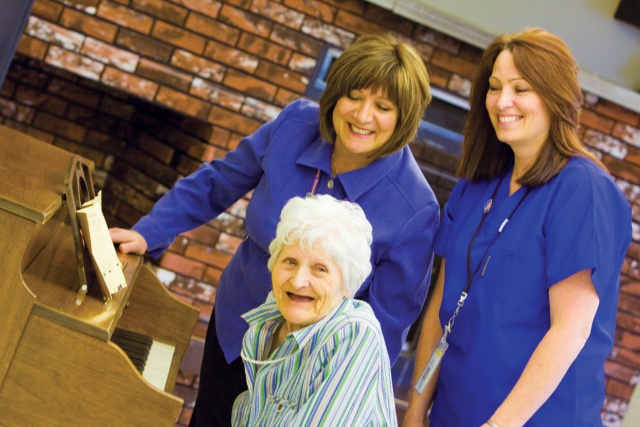
A Pathway to Achieve Sustainable Palliative Care in Long Term Care
The Project
Improving Quality of Life for People Dying in Long Term Care Homes was a five-year comparative case study research (2008-2013) involving four long term care homes in Ontario. It was funded by the Social Science and Humanities Research Council and conducted by the Quality Palliative Care in Long Term Care Alliance that consisted of researchers, long term care homes and community health and social service organizations.
The primary goal of the research was to improve the quality of life of people dying in long term care homes by developing palliative care programs specific to the needs of residents and homes. Other goals included promoting the role of the personal support worker in palliative care, creating partnerships between long term care homes, community organizations and researchers, and creating a tool kit of research-informed tools, strategies and innovations that could be shared with other long term care homes.
The methodology was participatory action research (PAR), which has two unique features.
- Participatory means that those people and organizations that will benefit from the research also fully participate in it.
- Action means that the goal of the research is to make social change.
The Outcomes
All four of the long term care homes that were study sites developed a palliative care program specific to their needs. Based on the work done in these homes, the Alliance generated substantial knowledge about how to implement the palliative approach in long term care. Alliance members shared the new knowledge through workshops, conferences, journal articles and professional committees to promote and advocate for palliative care in long term care.
Project outcomes included a new framework for a palliative care program specific to long term care, a philosophy of palliative care as resident-centered care from admission until the end of life and a process map that identifies the seven key processes in a comprehensive palliative care program.
A major project outcome was the development of a "toolkit" which can be used by other LTC homes to develop their own palliative care programs. It includes over forty tools, resources and innovations for organizational change, resident care, education, communication and forming community partnerships. These were all developed and evaluated in our project study homes.
The research further contributed to theory building in community capacity development by conceptualizing the process of change in long term care as four phases using the Kelley model.
Dr. Kelley and her team collaborated with Pallium Canada to create a palliative care curriculum for staff who work in long term care homes. This Pallium product is called LEAP Long Term Care. For information on how to arrange for a LEAP course in your home visit: Pallium Canada.
This website serves as a repository of resources. Long term care homes, residents, families, health care providers, and decision makers are invited to view and use the material at no cost. No permission from the authors is required, however, appropriate citing the source of the materials is requested. The website is no longer monitored as the project is complete.






